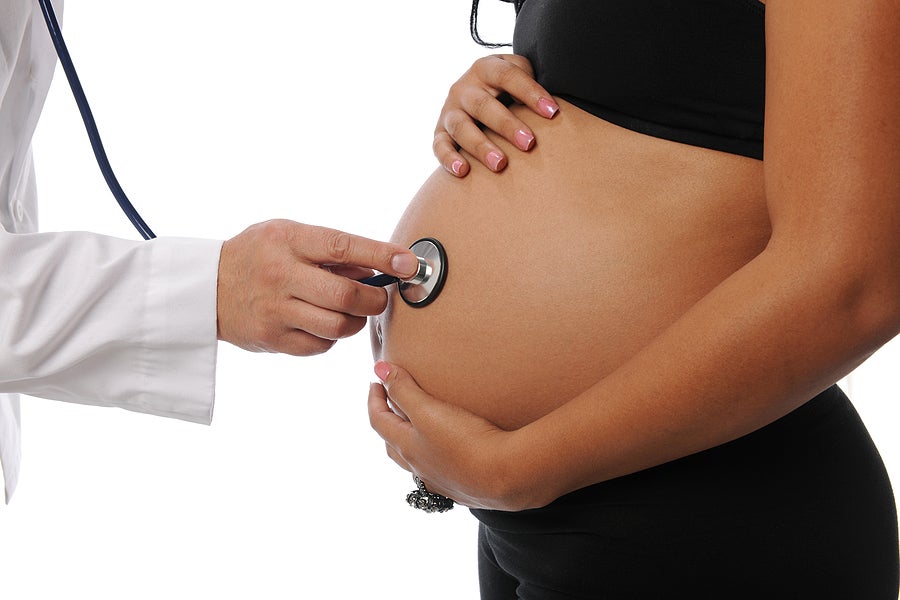Among all the Medicaid beneficiaries who’ve had their health coverage protected through the COVID-19 public health emergency, pregnant women stand out, new data released from CMS show.1 As readers of the SayAhhh! Blog know, the Families First Coronavirus Response Act included a “continuous coverage” provision that linked receipt of enhanced federal Medicaid and CHIP funding to a prohibition on involuntary disenrollment from Medicaid.
As a consequence of this provision and economic challenges associated with the pandemic, Medicaid enrollment has grown to a historic high of 79 million. All categories of beneficiaries have seen enrollment growth, but the pregnancy eligibility category saw the greatest percentage increase of any group from February 2020 to August 2021– adding nearly 600,000 beneficiaries– according to preliminary enrollment data. (See chart below)
While the number of people enrolled in the Medicaid and CHIP “pregnant women” category is still much smaller than for other groups, the pace of growth signals that the continuous enrollment protection is filling a gap for postpartum people. Before the disenrollment freeze took effect, coverage in Medicaid terminated 60 days after the pregnancy ended.
Because income eligibility for pregnancy coverage is typically higher than for other adult Medicaid coverage categories, many people lost access to Medicaid coverage just two months after giving birth. This cutoff is especially severe in states without Medicaid expansion, where eligibility for Medicaid coverage for non-pregnant adults is extremely low. (See chart below)

Source: “Expanding Postpartum Medicaid Coverage,” Kaiser Family Foundation, March 2021.
Estimates from the Congressional Budget Office show that about 45 percent of people covered by Medicaid and CHIP for pregnancy each year become uninsured at 60 days postpartum, cutting off access to care at a tenuous time.
This steep coverage cliff, combined with data from state maternal mortality review committees that showed a sizeable portion of maternal deaths happening in the late postpartum period after Medicaid coverage had ended, drove policymakers to create a Medicaid state plan option to allow states to extend postpartum coverage to one year after the end of pregnancy. More than half the states have indicated they intend to provide this coverage.
CMS’s data on pandemic Medicaid enrollment looks at national-level trends and isn’t intended to look at who is experiencing the greatest benefits of the extended postpartum coverage through the public health emergency, or where they live. However, a recent analysis from the HHS Assistant Secretary for Planning and Evaluation sheds some light on this question. Researchers estimated the effects of all states extending postpartum coverage for 12 months after the end of pregnancy and found that postpartum women in non-expansion states, women of color, younger women between the ages of 26 and 35, and women earning between 138 and 250 percent of the federal poverty level would be among the people experiencing the greatest benefit from the longer postpartum coverage period.
The ASPE report estimated that about 720,000 people each year would benefit from the expanded coverage if all states extended postpartum coverage, which is in the ballpark of what we’ve seen during the pandemic, when approximately 600,000 more people have been added to the Medicaid and CHIP pregnancy coverage category compared to the pre-pandemic levels, according to the CMS data.
The disenrollment freeze is essentially functioning as a proxy for what would happen if the whole country extended postpartum Medicaid coverage to at least 12 months after the end of pregnancy. We look forward to more detailed data on Medicaid’s role in preserving postpartum continuity of care during and after the end of the public health emergency, as well as future research on the effects of the extended postpartum coverage period on maternal and infant health outcomes. As state Medicaid agencies look ahead to resuming regular operations after the end of the public health emergency, they should pay special attention to the coverage needs during the postpartum period and lessons learned that can improve outcomes.
- Editor’s note: To maintain accuracy, CCF uses the term “women” when referencing statute, regulations, research, or other data sources that use the term “women” to define or count people who are pregnant or give birth. Where possible, we use more inclusive terms in recognition that not all individuals who become pregnant and give birth identify as women.


